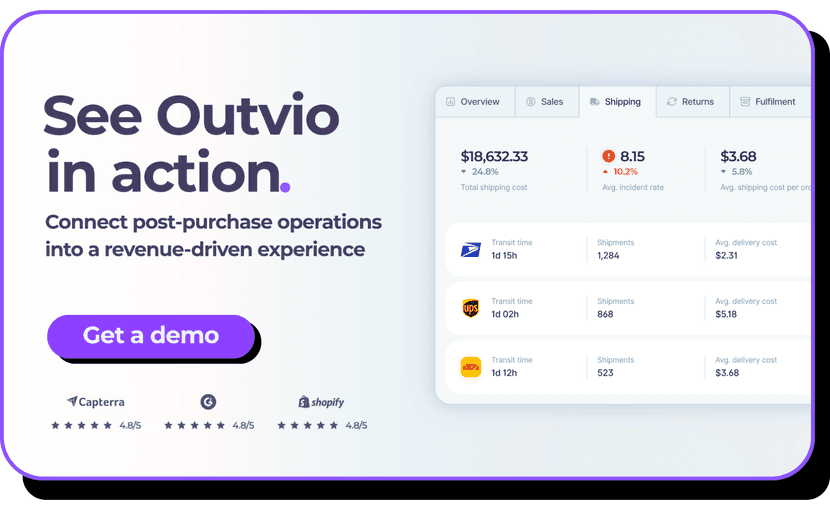Key takeaways:
- Gross merchandise value (GMV) is the total sales on your platform before fees, returns, or taxes, showing business activity
- Use GMV to monitor operations, spot top products, and measure marketing impact.
- Statista and Shopify use GMV to analyze eCommerce trends in marketplaces, regions, and countries
- Calculate GMV by multiplying product prices by quantities sold and adding them up.
- Boost GMV through upselling, cross-selling, free shipping, product bundles, great customer service, and easy returns
MV (Gross Merchandise Value) is a key metric in eCommerce that measures total sales value, typically quarterly or annually.
Understanding GMV is essential for any online business, from small Shopify stores to sellers on platforms like TikTok.
It helps assess business health, compare with other KPIs, and identify products that need improvement or drive profits. For example, a Reddit thread shows how GMV can guide decisions like upgrading Shopify plans.
This guide covers the GMV calculation formula, its pros and cons, why you shouldn’t rely on it alone, and advanced tips to increase your GMV and grow your eCommerce business.

What is GMV? Meaning and definition
GMV (Gross Merchandise Value) is the total sales value of goods over a set period, mainly used in eCommerce and retail.
It shows the total sales before deducting costs like shipping, taxes, or returns.
Tracking GMV helps assess your eCommerce business's growth. Tools like Shopify and professional analytics tools make it easy by automatically collecting GMV data from your sales and inventory systems.
What gross merchandise value does: Advantages and limitations
Advantages of using GMV
GMV is a versatile metric that serves many purposes beyond just measuring profit. Here are five main advantages:
- Instant performance snapshot. GMV provides a fast way to see a platform’s sales volume, making it simple to monitor sales activity.
- Informs pricing and planning. Insights from GMV data help shape pricing strategies and marketing efforts to increase sales.
- Makes trend analysis easier. Comparing GMV over different periods, products, or platforms helps identify trends and patterns.
- Attracts investors. Investors often use GMV to assess a business’s growth prospects, making it helpful for securing investment.
- Helps define sales objectives. GMV acts as a reference point for creating and monitoring sales targets.
What GMV doesn’t reveal
Although GMV is valuable, it doesn’t provide a complete view of your company’s financial situation. Here are some limitations:
- Lacks profit information. GMV doesn’t indicate actual profits, so it can’t fully reflect financial well-being.
- Excludes costs. GMV overlooks expenses like shipping, marketing, and platform fees, which may give a misleading sense of profitability.
- Doesn’t account for returns. Customer returns are not included in GMV, which can exaggerate sales figures.
- Could promote uneven growth. Emphasizing GMV might prioritize sales volume over profits, but other factors should be considered.
- Susceptible to inflation. Businesses might artificially increase GMV to appear as if they’re expanding, even if profits do not match.
How to calculate GMV: understanding the formula
To find GMV, just multiply the price of each product by how many you sold. Here’s a simple formula you can use:
GMV formula = Sales price of the products x Number of products sold
If you sell many different products, add up the sales for each product you sold at least once by multiplying its price by how many you sold.
Examples of how to calculate the GMV value of an eCommerce business
An online marketplace has several sellers making sales in one month:
- Seller A sells 1,000 electronic items at $300 each: $300,000
- Seller B sells 500 clothing items at $50 each: $25,000
- Seller C sells 200 furniture items at $1,000 each: $200,000
How to calculate: Add up the total sales value from all sellers, but do not include any platform fees or shipping costs.
GMV = (Units sold by Seller A x Price per unit) + (Units sold by Seller B x Price per unit) + (Units sold by Seller C x Price per unit) GMV = $300,000 + $25,000 + $200,000 = $525,000
GMV vs. other financial and marketing metrics
GMV vs. Revenue
Tracking GMV gives you a quick sense of your store’s sales momentum, but it doesn’t show what actually ends up in your bank account. Revenue, on the other hand, reflects what you keep after returns, shipping, and fees.
GMV vs. GTV (Gross Transaction Value)
If your business model includes commissions or service fees (like a marketplace or platform), GTV is a valuable metric to watch alongside GMV. While GMV shows the value of goods sold, GTV can reveal the total value of all transactions, including services.
GMV vs. Sales
It’s easy to mix up GMV and sales figures, but they aren’t always the same. Net sales subtract refunds and discounts, giving a more realistic view of what your business actually earned from orders.
GMV vs. GOV (Gross Order Value)
Some platforms report GOV, which may include shipping and taxes in the order total. If you’re benchmarking performance or negotiating with partners, make sure you’re comparing apples to apples—GMV usually excludes these extras.
GMV vs. GPV (Gross Payment Volume)
If you accept payments for more than just merchandise—like subscriptions, services, or fees—GPV will be higher than your GMV.
How you can use GMV insights effectively
Once you have GMV figures, the next step is to interpret them. That is some key information that you can get:
- Spot trends: check GMV over time to see seasonal changes, growth, or drops. This helps you adjust your marketing and inventory plans
- Check which products sell best: find out which items add most to GMV so you can promote or expand them, and rethink those that don’t sell well
- Manage inventory better: use GMV data to match stock levels with demand, so you avoid having too much or running out of popular products
- Improve marketing strategies: spend more on campaigns, channels, or audiences that bring in the most GMV, and stop those that don’t work well
- Boost customer retention: GMV grows with new buyers, but use loyalty programs or special offers to get people to buy again
- Check overall financial business health: compare GMV with other numbers like net revenue, profit margins, or customer costs to make sure your growth is steady and making money
- Help with planning: use GMV trends to set sales goals, prepare for busy times, and guide how you use resources in the future
- See how discounts and returns impact profits: if GMV is high but profits are low, it might mean returns or too many discounts are a problem
How to increase GMV in eCommerce: 5 bullet-proof techniques
1. Implement upselling and cross-selling strategies
To boost your GMV, use marketing strategies to promote new collections, launches, events, and discounts. Combine several methods for best results.
For instance, add a store banner to guide price-sensitive buyers to discounts, and promote new collections on your tracking page so customers see more offers when checking their order status.
Additionally, use product recommendation software and include new products in each shipping notification to encourage repeat purchases.

2. Offer free shipping
We recommend offering free shipping, but not in the usual way most retailers do.
Free shipping must be planned and calculated carefully, as it can quickly turn sales into losses if not managed properly.
For international or large retailers, free shipping may only be feasible for local customers. For cross-country or bulky shipments, like furniture, offering free shipping can significantly reduce your GMV.
This strategy works best if your products are average in size and weight, shipping costs are standard, and your lower-priced items already cover standard shipping expenses.

3. Create product bundles or kits
Although it may not be a possibility for every retailer out there, product bundles or kits can be an easy and cost-effective way to increase the GMV without a considerable investment of resources.
Kitting technique is at the core of many retailers, such as subscription boxes, but can be definitely taken advantage of by any business whose products are somehow related to each other. For instance, if you sell cosmetics, you can create a bundle with your top sellers or a kit where products with the same scent (or in the same format) are combined.

Source: Sephora
4. Introduce loyalty programs
Loyalty programs have been around for years, but recently, cash-back platforms have emerged to reward buyers across many online stores.
While traditional loyalty methods like points, promo codes, and freebies still work, partnering with cash-back programs is a fast, affordable way to offer more to customers and potentially boost your AOV and GMV. Since you only pay commissions on purchases, costs are tied directly to sales.
5. Turn returns into revenue
An efficient returns process builds customer trust, leading to higher sales and GMV. Easy returns make shoppers more confident in purchasing.
Returns can also drive repeat purchases. Offering store credit or exchanges instead of refunds encourages customers to buy again, turning returns into new sales. A smooth returns system increases loyalty and consistent GMV growth.
6. Enhance customer support
Offer real-time, multi-channel customer support to resolve questions quickly.
Fast assistance helps close more sales and increases average order value. Additionally, implementing chatbots or AI-driven help desks can provide instant responses outside of business hours, ensuring customers always feel supported.
7. Launch limited-time offers and flash sales
Create urgency by running limited-time promotions or flash sales on select products. These time-sensitive deals encourage customers to act quickly, increasing conversion rates and average order value. Use countdown timers in your store and targeted notifications to maximize impact and drive a spike in GMV.
How to make your eCommerce business profitable with lower GMV
While a high GMV may seem impressive, real success is measured by profitability, not just sales volume.
You can increase profits by focusing on higher-margin products, streamlining operations, and building customer loyalty. Boosting average order value, reducing returns, and optimizing pricing also help maximize each sale.
Investing in automation and data analytics reveals opportunities to improve efficiency and profit by tracking metrics like customer lifetime value, fulfillment costs, and conversion rates. Understanding your best customers and monitoring fulfillment can further enhance marketing and operations.
Ultimately, sustainable growth relies on efficiency and smart choices, not just increasing sales numbers. If your business is expanding, software like Outvio can help reduce logistics costs and turn returns into revenue. Request a demo to learn more.




